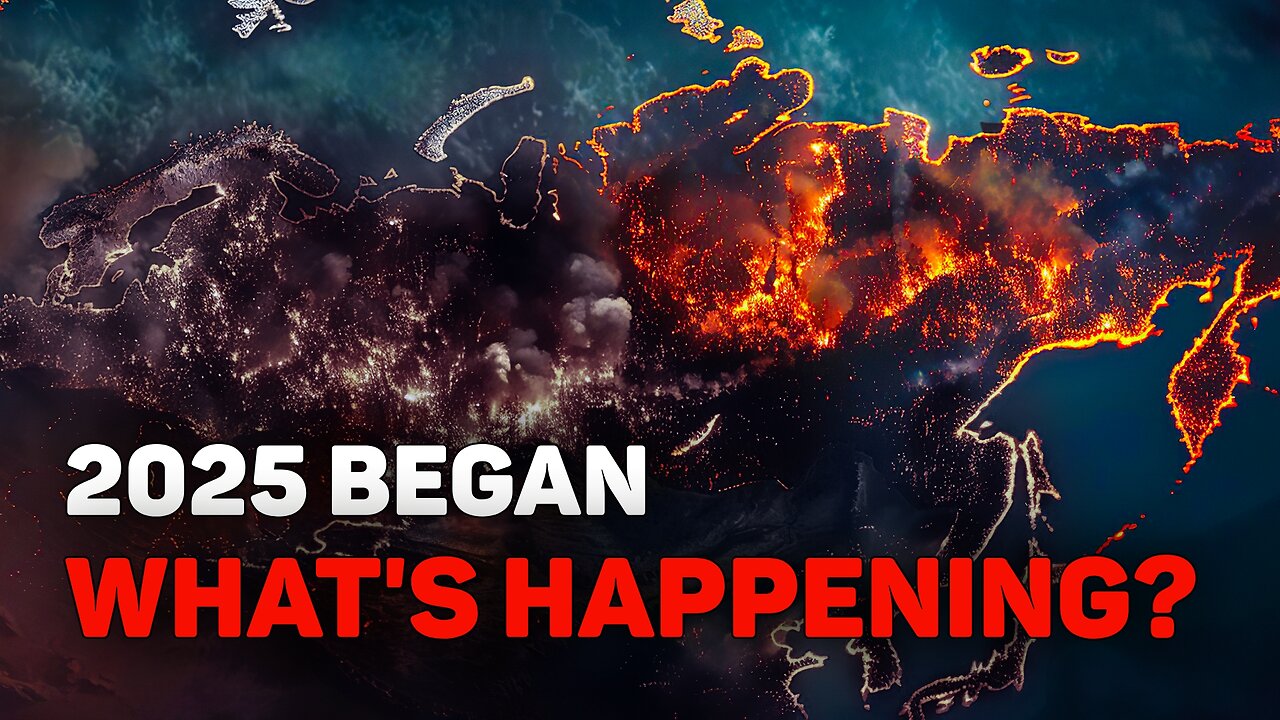Premium Only Content

SCIENTISTS' WARNINGS COME TRUE: Powerful Cataclysms of 2025!
The world barely had time to recover from the climate disasters of 2024 before nature delivered another devastating blow to humanity. Although 2025 has just begun, the first three weeks of January have already become a real test for our planet. In this video, you’ll witness the most powerful, abnormal, and unprecedented natural disasters that occurred from January 1 to January 21.
In January 2025, the United States faced three powerful winter storms. The first storm, starting on January 3, swept from Kansas to New Jersey. Over 350,000 homes lost power, and seven people died. The second storm hit the southeastern states on January 9, bringing heavy snowfall and resulting in thousands of flight cancellations. A state of emergency was declared in five states. The third storm began on January 20, causing heavy snowfall and extreme cold along the Gulf Coast. Wind chills dropped to unprecedented levels of -18°C (0°F) in some areas. In Alabama, a 143-year record for daily snowfall was broken.
Starting January 7, wildfires raged across Southern California, burning 16,000 hectares. The fires claimed 28 lives, forced the evacuation of more than 200,000 people, and destroyed over 12,000 buildings. The damage is estimated at over $250 billion.
While Algeria in North Africa experienced unusual cold and snowfall in the desert from January 1, Russia saw unexpected warm spells instead of its typical Epiphany frosts. Buds started blooming on trees, and snowdrops appeared. On January 9, the temperature in Armavir, Russia, reached +17.5°C (63.5°F).
In Lithuania, early January brought autumn-like weather with heavy rains and floods, accompanied by wind speeds of up to 29 m/s (65 mph).
Saudi Arabia was hit by torrential rain, hail, and thunderstorms starting on January 6, causing sudden and severe flooding.
On January 17, a powerful storm struck Sicily, Italy, bringing unusually early tornadoes and widespread destruction.
From January 15, a series of powerful storms battered Australia's east coast. Wind speeds in Sydney reached 120 km/h (75 mph), uprooting trees, damaging roofs, and downing power lines. Over 200,000 homes lost power, and one person died in the storms.
Scientists are warning about a troubling trend of steadily increasing seismic activity. Earthquakes with magnitudes of 5.0 have become almost daily occurrences in recent years and are now seen as normal. However, earthquakes with magnitudes of 6.0 and higher have become more frequent over the past six months.
This trend has already gained momentum in early 2025. In just the first three weeks of the year, seven such earthquakes were recorded.
The most destructive occurred on January 7, when a magnitude 6.8 earthquake struck Dingri County in the Tibet Autonomous Region of China. More than 600 aftershocks, with magnitudes of up to 4.4, followed the main quake.
The earthquake destroyed dozens of villages and over 3,600 homes. Tragically, 126 people died, 188 were injured, and thousands were left homeless in harsh winter conditions. It was one of the strongest earthquakes in the region in decades.
The dynamics of climate disasters we are witnessing precisely match the mathematical model presented by an international group of scientists years ago. Recent forecasts for 2025 offer little comfort.
The intensity of natural disasters is expected to increase by 12–15% compared to 2024, which was already a record-breaking year in many respects. Without any action from humanity, there is no reason to expect this trend to slow down.
Unfortunately, previous warnings from scientists about the growing frequency of disasters and the need for the population to prepare were largely ignored, resulting in many preventable tragedies. Timely responses to these warnings could have averted some of the suffering caused by humanity’s unwillingness to face the truth.
Today, both individual countries and the planet as a whole have been given specific forecasts of climate threats. Proposals and solutions for countering these challenges have been put forward. But will humanity listen this time? The question remains unanswered…
-
 27:01
27:01
Creative Society
1 month agoForecast for 2025: Global Changes in the Planet Earth System
2.04K4 -
 30:25
30:25
Standpoint with Gabe Groisman
1 day agoDemocrats Are Stalling Trump Appointments with Senator Rick Scott
53.1K14 -
 1:00:24
1:00:24
The StoneZONE with Roger Stone
5 hours agoAnthony Fauci’s Brutal History Of Animal Torture Exposed! | The StoneZONE w/ Roger Stone
36.3K13 -
 LIVE
LIVE
Man in America
6 hours agoUSAID Corruption, $21 TRILLION Missing, & the End of the US Global Empire?
2,569 watching -
 56:38
56:38
Flyover Conservatives
6 hours ago6 Steps to Take Advantage of Trump’s New Golden Age! - Clay Clark | FOC Show
12.9K -
 1:15:25
1:15:25
Glenn Greenwald
6 hours agoTulsi and RFK Jr. Approved by Key Senate Committees; Trump Meets Netanyahu: Wants to Cleanse Gaza; Pro-Palestinian Group Suspended at UMich | SYSTEM UPDATE #402
70K82 -
 DVR
DVR
Danny Polishchuk
6 hours agoThe Funniest Call In Show On Earth - Live From New York City's Best Comedy Club
19.7K1 -
 1:41:13
1:41:13
megimu32
6 hours agoON THE SUBJECT: Will the Super Bowl Be WOKE??!
20.8K4 -
 1:18:26
1:18:26
Redacted News
7 hours agoBREAKING! USAID Created and Funded COVID-19 Virus and Bioweapons, RFK and Tulsi pass major hurdle
142K189 -
 50:54
50:54
Candace Show Podcast
7 hours agoBecoming Brigitte: Gaslighting The Public | Ep 1
191K194